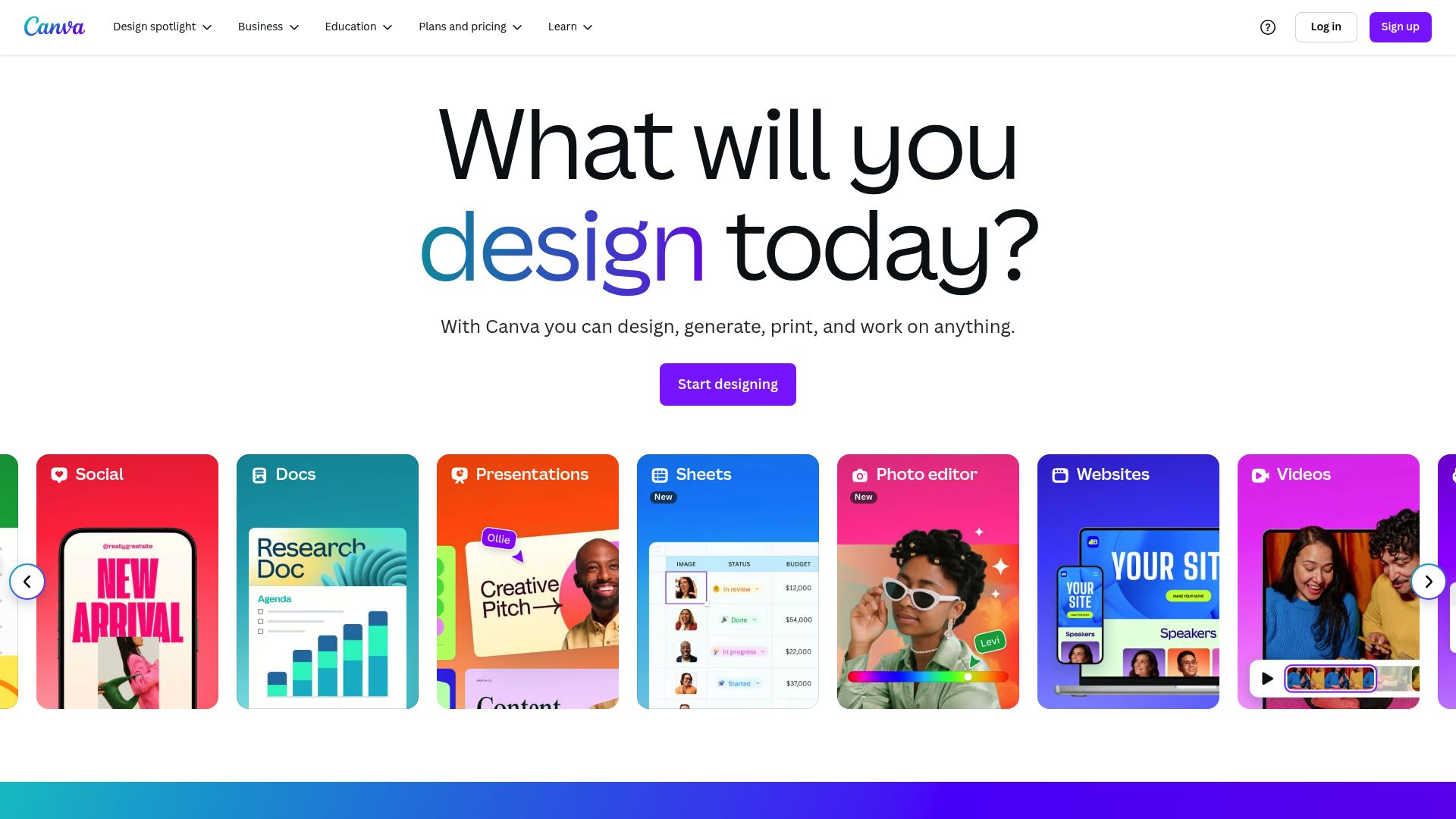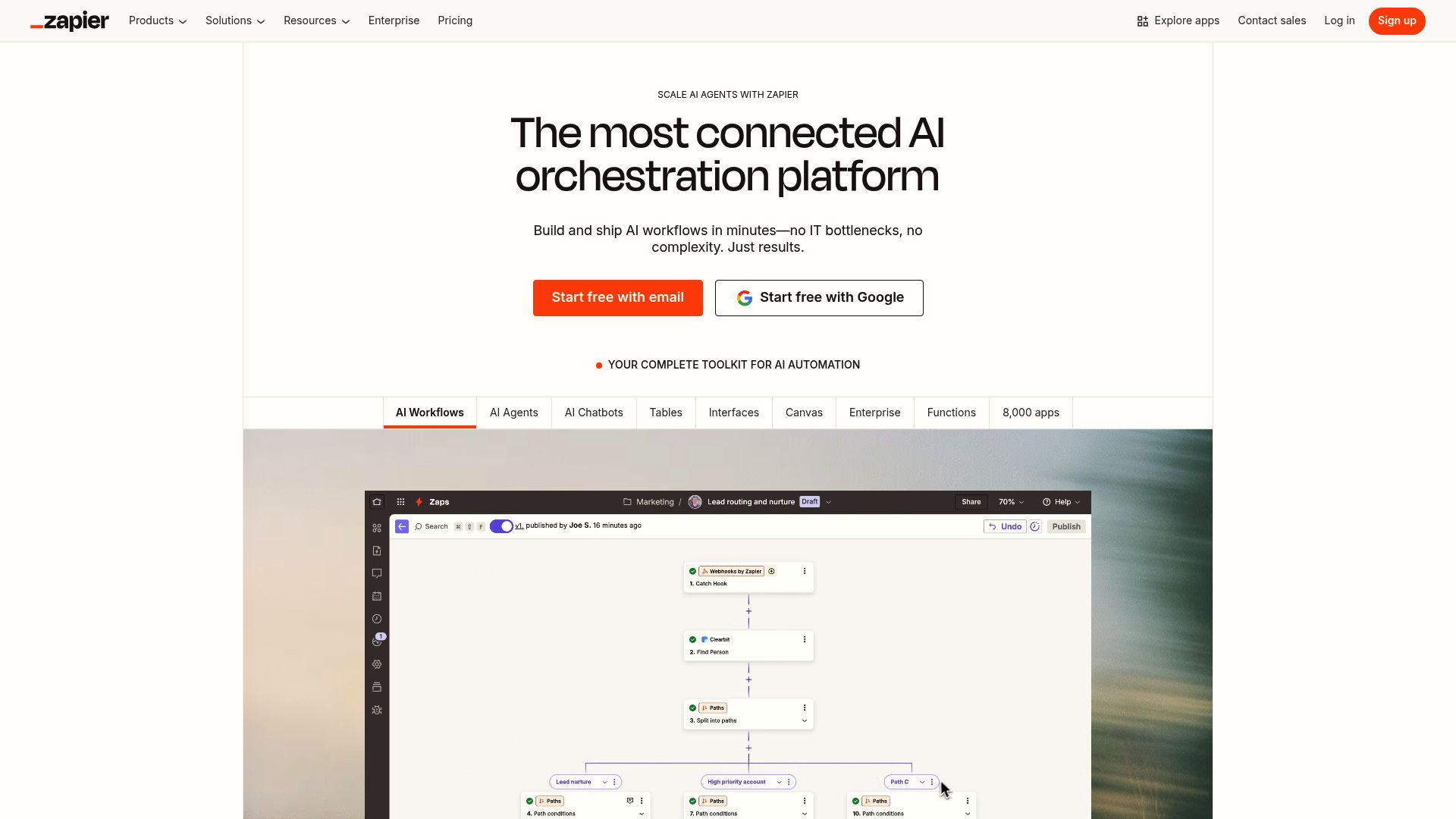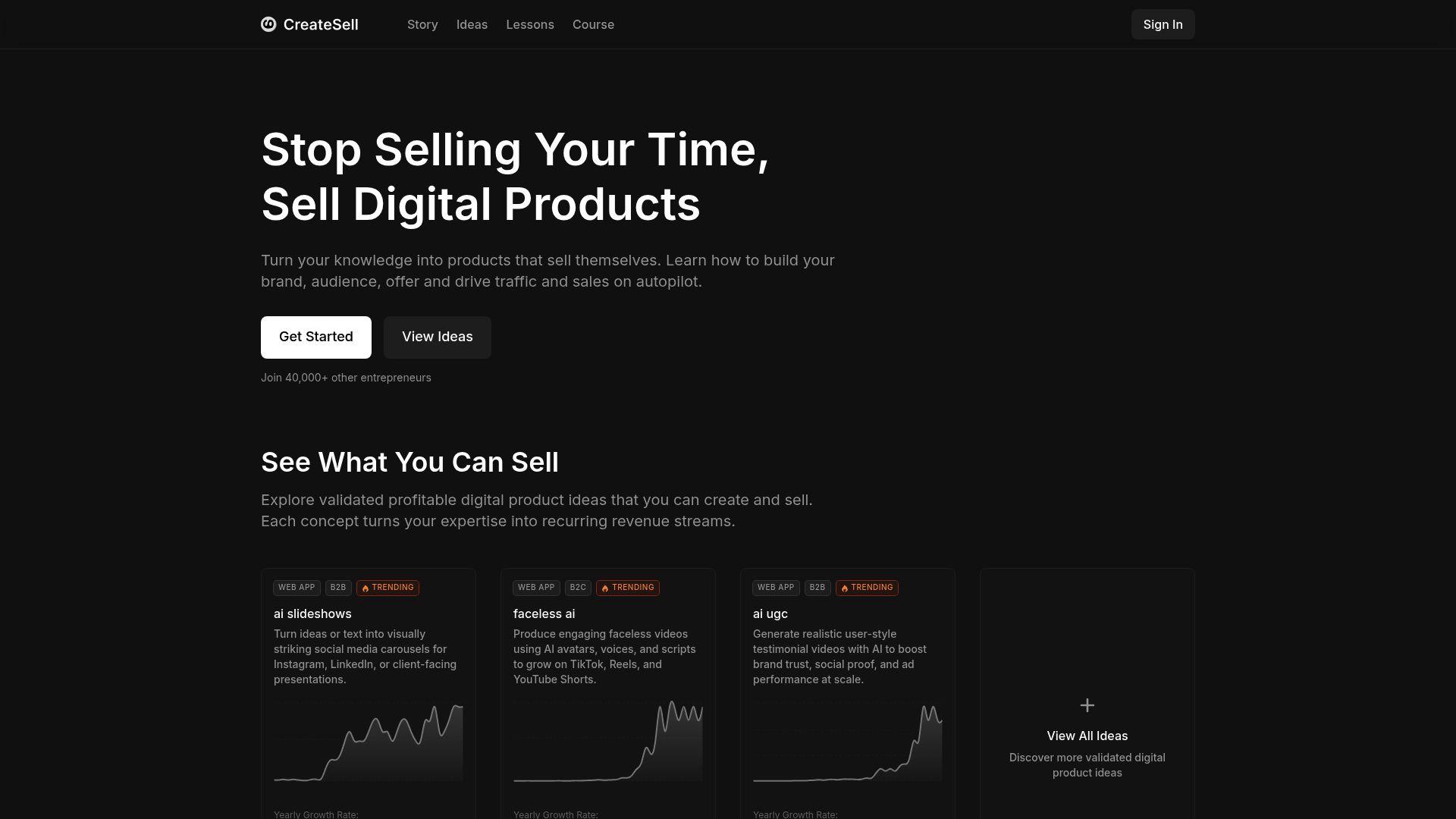The digital economy is booming, and what digital products are in demand is shifting rapidly as consumers embrace digital-first solutions. By 2025, experts predict that digital product growth will outpace traditional markets, opening new doors for creators and entrepreneurs.
In this guide, we’ll reveal the top 7 digital products set to dominate demand in 2025. These include AI-powered tools, e-learning platforms, and creative digital assets.
Looking for actionable insights and real profit potential? You’re in the right place—discover emerging trends and get a clear roadmap to capitalize on these digital opportunities.
Ready to future-proof your business and tap into the next wave of digital demand? Let’s get started.
Why Digital Products Are Surging in Demand for 2025
The digital landscape is evolving at lightning speed, and understanding what digital products are in demand has never been more crucial. Each year brings new trends, but 2025 stands out for its rapid acceleration in digital adoption, reshaping how people create, consume, and profit from digital goods.
The Rise of the Creator Economy
A new generation of independent creators is rewriting the rules of business. With platforms like Substack and Gumroad, anyone can craft and sell what digital products are in demand, from eBooks to online courses, without technical barriers.
Solopreneurs are thriving by monetizing skills and passions. These platforms offer built-in audiences, payment processing, and marketing tools, making it easier than ever to launch. The result? A flourishing ecosystem where creators can turn expertise into income streams.
Global Digital Transformation Accelerators
The global shift to remote work and digital-first business models is fueling unprecedented demand for digital products. Companies and consumers now rely on digital assets for daily productivity, seamless communication, and collaboration.
According to global digital transformation spending projections, worldwide investment in digital solutions is expected to hit $3.4 trillion by 2026. This surge highlights why knowing what digital products are in demand is vital for staying ahead.
Consumer Preferences Shifting to Instant Access
Today’s consumers expect everything at their fingertips. The appetite for on-demand learning, streaming entertainment, and instant productivity tools is driving new business models.
Subscription services and microtransactions are now the norm. Brands like Netflix and MasterClass have mastered delivering what digital products are in demand, offering value through convenience and immediate access. Meeting this expectation is key for digital success.
Scalability and Low Overhead Benefits
One of the biggest advantages of digital products is their scalability. Once created, they can be distributed globally with minimal costs, reaching audiences 24/7.
Compared to physical goods, there’s no need for warehouses or shipping logistics. This makes it easier for creators and businesses to test what digital products are in demand without large upfront investments. The low overhead opens doors to experimentation and rapid growth.
Key Challenges and Considerations
Despite the opportunities, competition is fierce. The market is saturated, so standing out requires focusing on quality and targeting the right audience.
Differentiation and innovation are crucial for those exploring what digital products are in demand. It’s also important to address data privacy and copyright concerns, ensuring ethical and sustainable growth in the digital marketplace.
7 Best What Digital Products Are in Demand for 2025
As we look ahead, it's clear that what digital products are in demand is evolving fast. The following seven categories are set to lead the market in 2025, offering opportunities for creators and businesses ready to capitalize on emerging trends.
1. AI-Powered Design Tools (Canva)
AI-powered design tools are redefining what digital products are in demand for creators and businesses. Canva, a leader in the space, offers a free tier and a Pro plan at $12.99/month, making advanced design accessible.

Key features include AI image generation, a vast template library, brand kits, and seamless collaboration. These tools allow users to create professional visuals quickly, even without design experience.
- Pricing: Free & Pro options
- Core Features: AI image creation, templates, brand kits
- Benefits: Streamlines design, saves time
- Target Audience: Marketers, small businesses, content creators
Pros:
- Extremely user-friendly
- Extensive asset library
- Integrates with many platforms
Cons:
- Some advanced editing is limited
- Not as robust as Adobe for experts
The unique selling point is AI-driven design and automation, helping users work smarter. As AI integration in digital products accelerates, expect more innovation and demand for these solutions. For anyone asking what digital products are in demand, AI-powered design tools are at the top of the list.
2. Online Course Platforms (Teachable)
Online learning continues to surge, making course platforms a central answer to what digital products are in demand in 2025. Teachable stands out with its user-friendly interface and flexible pricing—starting free, then paid plans from $39/month.

Creators can build, market, and sell courses globally. Features include course creation, integrated payments, analytics, and student management. This empowers educators, coaches, and entrepreneurs to monetize their knowledge.
- Pricing: Free & paid plans
- Features: Course builder, payment processing, analytics
- Benefits: Reach a worldwide audience
- Target Audience: Educators, coaches, entrepreneurs
Pros:
- Built-in marketing tools
- Simple setup
- Scalable for growth
Cons:
- Transaction fees on lower tiers
- Limited customization on free plan
Teachable’s all-in-one solution makes it easy to launch and scale. When researching what digital products are in demand, online learning platforms consistently top the charts as more people seek flexible, on-demand education.
3. Digital Download Marketplaces (Etsy Digital)
Digital download marketplaces are a staple in the conversation about what digital products are in demand. Etsy Digital allows creators to sell printables, templates, planners, and digital art to a massive, engaged audience.
Pricing involves a small listing fee and a 6.5% transaction fee. Features include easy shop setup, built-in traffic, and access to niche buyers who value unique digital goods.
- Pricing: Listing + transaction fees
- Features: Sell printables, templates, art
- Benefits: Access to Etsy’s audience
- Target Audience: Artists, designers, crafters
Pros:
- Quick setup
- Built-in marketplace traffic
- Niche product focus
Cons:
- High competition
- Platform fees
Etsy Digital stands out for its ability to connect creators with buyers seeking creative, ready-to-use digital assets. For those exploring what digital products are in demand, marketplaces like this offer a proven path to income.
4. Business Automation Tools (Zapier)
Business automation tools are reshaping what digital products are in demand by helping companies work smarter, not harder. Zapier offers a free plan, with paid options starting at $19.99/month, and connects over 5,000 apps for seamless workflow automation.

Features include automating repetitive tasks, integrating various platforms, and reducing manual work. This is a game-changer for small businesses, agencies, and solopreneurs.
- Pricing: Free & paid plans
- Features: Workflow automation, app integrations
- Benefits: Saves time, boosts efficiency
- Target Audience: SMEs, agencies, freelancers
Pros:
- No coding required
- Huge range of integrations
- Scalable for growth
Cons:
- Learning curve for complex tasks
- Can get expensive at scale
Zapier’s unique selling point is its ability to connect virtually any digital tool. Considering what digital products are in demand, automation solutions are essential for modern business operations.
5. Stock Media Libraries (Envato Elements)
Stock media libraries are a core part of what digital products are in demand, especially for creators needing high-quality assets. Envato Elements offers unlimited downloads for $16.50/month, providing access to photos, videos, templates, music, and more.

Key features include a vast library, commercial licenses, and one subscription for all asset types. This appeals to designers, video editors, and marketers who need creative assets on a budget.
- Pricing: Subscription-based
- Features: Photos, videos, templates, music
- Benefits: Unlimited downloads, commercial use
- Target Audience: Designers, marketers, video producers
Pros:
- Huge selection
- Simple licensing
- Cost-effective
Cons:
- Variable quality
- Subscription required
Envato’s unique selling point is its all-in-one subscription. For those asking what digital products are in demand, stock media remains indispensable for content creation.
6. Ebook & Audiobook Platforms (Audible)
Ebooks and audiobooks are a growing sector in what digital products are in demand. Audible leads with a $7.95/month subscription, offering a massive library of audiobooks, podcasts, and exclusive content.

Features include offline listening, curated recommendations, and a user-friendly mobile app. The platform is popular with commuters, lifelong learners, and anyone who prefers audio content.
- Pricing: Subscription-based
- Features: Audiobooks, podcasts, exclusives
- Benefits: Learn and entertain on the go
- Target Audience: Book lovers, commuters, learners
Pros:
- Extensive selection
- Offline access
- High-quality production
Cons:
- Not all books available
- Monthly subscription required
Audible’s market dominance and focus on spoken-word content make it a go-to for anyone exploring what digital products are in demand in the content consumption space.
7. Brand-Building & Digital Product Business Courses (CreateSell)
Business courses focused on brand-building and digital products round out what digital products are in demand for 2025. CreateSell, led by Modest Mitkus, offers comprehensive step-by-step programs for launching and scaling a digital product business.

Pricing varies by course, but each includes practical guidance, automation strategies, and marketing insights. These courses are ideal for creators wanting to shift from services to scalable product-based income.
- Pricing: Varies per course/package
- Features: Actionable content, expert guidance
- Benefits: Monetize knowledge, build scalable business
- Target Audience: Aspiring entrepreneurs, freelancers
Pros:
- Practical, real-world focus
- Community support
- Expert insights
Cons:
- Requires time and effort
- Results depend on implementation
CreateSell’s unique focus on actionable steps and automation helps users fast-track their journey. If you’re researching what digital products are in demand and aiming to build a one-person business, these courses offer a proven blueprint.
Key Trends Shaping Digital Product Demand in 2025
The landscape of what digital products are in demand is constantly evolving, shaped by technology, consumer preferences, and global trends. As we look ahead to 2025, several key forces are set to define which products will capture attention and drive growth.
AI and Automation Integration
AI is fundamentally changing what digital products are in demand. Tools leveraging artificial intelligence are now powering content creation, customer support, and hyper-personalized experiences. Platforms like ChatGPT and Jasper have made it easier than ever to automate routine tasks and deliver highly relevant outputs.
For creators and businesses, integrating AI means they can scale faster and focus on strategy rather than manual work. In 2025, expect to see even more AI-powered solutions that streamline workflows, making these products top choices for those seeking efficiency and innovation.
Personalization and Micro-Niche Products
The rise of personalized solutions is redefining what digital products are in demand for niche audiences. Consumers increasingly expect offerings tailored to their specific interests, learning styles, or professional needs. Think niche templates, industry-specific resources, or specialized online courses.
By focusing on micro-niches, creators can stand out in a crowded market and build loyal communities. This trend not only increases engagement but also allows businesses to command premium pricing for unique digital experiences.
Subscription and Membership Models
Recurring revenue is at the heart of what digital products are in demand now. Subscription services and membership platforms are replacing one-time sales with ongoing value delivery. Examples like Patreon and Skillshare highlight how creators can build stable income streams by offering exclusive content or community access.
For both consumers and creators, these models offer predictability and a steady flow of updates. As the appetite for fresh, regularly updated content grows, subscription-based digital products will remain a dominant trend in 2025.
Mobile-First and Cross-Platform Access
Mobile usability is a critical driver of what digital products are in demand. With over 60% of digital content now consumed on mobile devices, ensuring seamless cross-platform access is non-negotiable. Products that deliver a smooth experience on smartphones and tablets will capture the largest audiences.
The surge in mobile commerce further emphasizes this shift. According to mobile commerce growth trends, optimizing digital products for mobile is essential for tapping into rapidly expanding markets. In 2025, expect successful products to prioritize responsive design and device compatibility.
Sustainability and Ethical Digital Products
Sustainability is emerging as a key factor in what digital products are in demand. Consumers want offerings that align with their values, including eco-friendly, inclusive, and ethically produced digital assets. Accessibility-focused design and transparent business practices are no longer optional—they’re expected.
This trend opens new opportunities for creators who prioritize ethics and sustainability, allowing them to differentiate in a competitive market. As more buyers seek responsible choices, these digital products will see increased demand and loyalty.
How to Identify and Capitalize on Emerging Digital Product Opportunities
Staying ahead of the curve with what digital products are in demand requires a strategic approach. By combining research, community engagement, agile testing, automation, and ongoing learning, creators and businesses can unlock opportunities in a rapidly shifting market.
Market Research and Trend Analysis
The first step to discovering what digital products are in demand is thorough market research. Use tools like Google Trends and Exploding Topics to pinpoint rising interests and shifts in consumer behavior. Track competitors to see what’s gaining traction and identify gaps you can fill.
Review industry reports and online learning market growth statistics to validate your ideas with real data. For instance, this analysis highlights the ongoing boom of e-learning platforms and digital courses.
Regularly collecting and analyzing this information helps you spot trends before they explode, giving you a first-mover advantage.
Audience Building and Community Engagement
Building an audience is foundational to capitalizing on what digital products are in demand. Start by engaging with your target market on social media platforms, forums, and email lists.
- Share valuable content to attract interest.
- Participate in discussions to establish authority.
- Host webinars or Q&As to foster loyalty.
A dedicated community provides direct feedback, which guides product development and ensures your digital offering resonates with real needs.
Rapid Prototyping and MVP Launches
Testing your ideas quickly is crucial for understanding what digital products are in demand. Rather than investing heavily upfront, create a minimum viable product (MVP) to validate your concept.
- Pre-sell an online course or digital asset.
- Offer beta access to gather early feedback.
- Iterate based on user input.
This approach saves time and money, letting you pivot if necessary before scaling up your efforts.
Leveraging Automation for Scalability
To succeed with what digital products are in demand, automation is your best friend. Use email marketing automation to nurture leads, schedule content delivery, and streamline customer support.
- Set up automated sales funnels.
- Integrate payment and delivery systems.
- Monitor analytics for ongoing optimization.
Automation enables you to serve a global audience efficiently, freeing up time to focus on growth and innovation.
Continuous Learning and Product Iteration
Staying relevant in the digital landscape means embracing continuous learning. Regularly collect user feedback and monitor performance metrics to refine your digital products.
- Update features based on customer suggestions.
- Study competitors’ improvements and adapt.
- Join webinars and industry groups to stay informed.
Iterating your offerings ensures you remain aligned with evolving demand and maintain a competitive edge.
Now that you’ve seen the top digital product trends for 2025 and how creators are turning their knowledge into income, you might be wondering what ideas could work for you. Whether you’re dreaming of launching your first digital product or looking to expand your current lineup, finding inspiration is the first step. I know it can be overwhelming with so many possibilities out there—but you don’t have to start from scratch. Ready to explore what’s possible and spark your next big idea? View Product Ideas and discover what’s in demand right now!